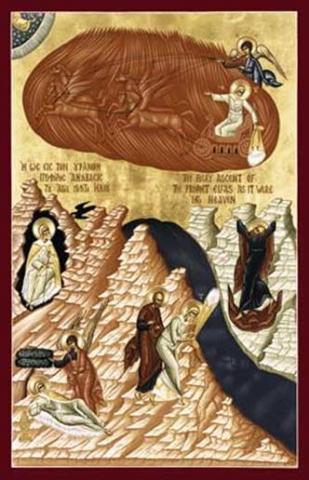Elisha (and more kings)
ELISHA AND MORE KINGS
Possible Lesson Plan:
- Open with prayer.
- Scripture Reference: II Chronicles 24-33. In the younger years, we have concentrated in this lesson on Elisha. But, here we will focus on a happier period in the history of Judah, the southern kingdom. Have the students read through the passage, listing each king, whether he was good or evil, and at least one prominent event from his reign (if there were any!). How does one decide about good vs. evil? Then play “King Concentration” with the names of the kings (two of each) in rows randomly on the board. For simplicity, cover each with a piece of Post-It paper with a number on it over each. The student who matches two and can say something about that king gets the points and keeps going.
- History: For over 100 years, from Joash to Jotham, Judah enjoyed prosperity under good kings. Then, after the corrupt reigns of Ahaz, Manasseh, and Amon, Hezekiah, a good and wise king, brought the people back to the Lord. Most importantly, he reinstituted temple worship, a cause of great celebration among the people. Meanwhile, the northern kingdom of Israel had fallen to Assyria.
- Service References: The story of Elijah and Elisha passing dry-shod through the Jordan is read at Theophany; “The river Jordan once turned back before the mantle of Elisha, after Elijah had been taken up into heaven, and the waters were divided on this side and on that: the stream became a dry path before him, forming a true figure of the baptism whereby we pass over the changeful course of life” and from matins “The prophet once disclosed the grace of baptism in the Holy Spirit, when he struck the streams of Jordan with his mantle. Its waters now are parted once again, for Christ has appeared in them and makes a path for us unto divine regeneration.” This time the water was not struck by a rod or an ark but by a mantle: “The stream of Jordan was formerly cut in two by a mantle, prefiguring Thy baptism whereby the robe of the passions is rent, and a garment of incorruption is woven for those who cry aloud: O Christ our God, blessed art Thou.” How is Elisha’s mantle our baptismal robe? The cleansing of Naaman in the Jordan from II Kings 5 is also read at vespers of Theophany. Why? And the story of the purification of the spring of Jericho with salt is read on Theophany also. Why?
References occur to other miracles of Elisha. His raising of the son of the Shunamite woman in II Kings 4 is read on Holy Saturday. What does it prefigure? And on the Exaltation of the Cross we sing at matins, “Jordan received into its deep bosom a sharp ax, and then was forced by a stick of wood to give it back again, thus betokening the cutting of error by the Cross and baptism” – such a tiny and seemingly insignificant miracle. How does this prefigure both feasts?
- Discussion: We’ve spent so much time on the kings and history, that there is little left for discussion. Let’s have some fun! Let’s celebrate with Hezekiah! Plan a “Hezekiah Party” for the younger children for next week’s opening exercises. What are we celebrating? How can we celebrate it? Be creative: a temple-shaped cake? A skit? Ram’s horns and menorahs? Balloons decorated how? A game? Remember, they do not know the story and may need to be told the meaning of the decorations, refreshments, and games.
Alternately, if you’re not into parties, think about politics. Ugh! What made a good leader for Judah? A bad one? A good leader today? A bad one? The Hebrews were stuck with their king, we vote for our leaders. Most of you will be voting soon. How do you decide whom to vote for? What qualities are you looking for? List our present and most recent past presidents on the board. Good qualities? Bad qualities? Which king of Judah would each of them most resemble and why? Once elected, is there anything we can do to improve their “reign”?
- Close with prayer: Pray for the leaders of our country.
